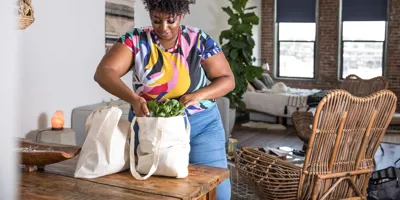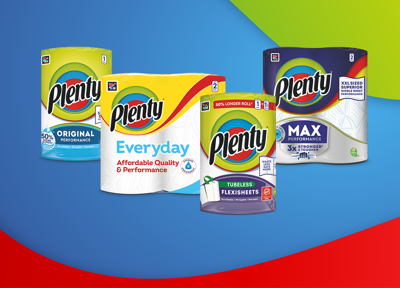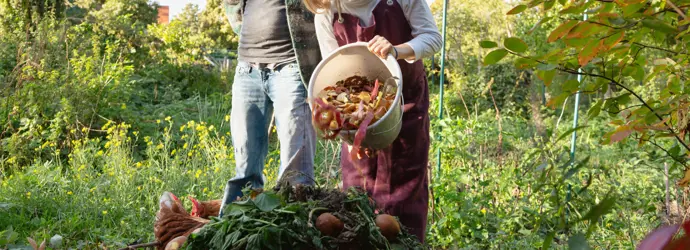
It’s easy to think that all plastic is bad for the environment, but how bad is plastic packaging really? It’s worth understanding how eco-plastic packaging is different to non-recyclable packaging and whether plastic packaging can be better for the environment when it’s recyclable and you use renewable or recycled plastics. Here we’ll present both the benefits of plastic packaging and the drawbacks, so you can feel well-informed about this timely topic.
Plastic packaging benefits
There are positives to using plastic in packaging. Some plastic packaging benefits include:
- Waste prevention. It can help avoid spillages and keep products together.
- Increased freshness. It can ensure that the products you receive and use are clean, hygienic, and ready to use.
- Damage protection. It can help keep delicate products safe in transit.
- Contamination prevention. It can help protect products from damage or contamination from gases/moisture/light/insects/microorganisms/humidity/etc.
- Increased preservation. It can preserve products for a longer time.
Plastic itself also has positives. Some of the benefits of plastic (packaging or otherwise) include:
- It’s shatter-resistant. Unlike glass, plastic doesn’t break when dropped.
- It’s hygienic. Plastic helps stop contamination by being sealed – a particular benefit for medical products like sterile syringes.
- It’s secure. Plastic can have safety mechanisms, like childproof locks.
- It’s lightweight and durable. As it’s lighter and thinner than certain alternatives, plastic can take up less space in trucks/planes, which can mean lower emissions.
- Certain plastics are recyclable. Recyclable types of plastic can be used to make new products.
Plastic packaging drawbacks
There are also negatives to using plastic, but just how bad is plastic packaging?
- It can end up in landfill. If packaging is made from plastics that aren’t easily and readily recycled, then it will end up in landfill or incineration.
- It can take a long time to break down. Some types of plastic waste can stay in landfills for centuries.4
- It contributes to our carbon footprint. According to WRAP (a climate action NGO established in the UK in 2000), plastic production, use, and disposal around the world results in around 1.8 billion tonnes of carbon emissions a year.1
- It can cause pollution. About a third of all plastic packaging leaks from collection systems and pollutes the environment, WRAP states.1
- It makes the up majority of plastic waste. WRAP has stated that plastic packaging accounts for nearly 70% of the UK’s plastic waste.1
There are ways to combat many of these drawbacks, though. For example, the majority of plastics in our packaging are made of polyethylene or polypropylene. But can you recycle plastic packaging made of these plastics? That’s a complex question, as recycling capabilities are different in different areas. However, the good news is that these plastics can be recycled in many countries in Europe, especially if it’s made from polyethylene. It is important to improve the collection schemes for plastics and encourage consumers to recycle used packaging.
So now you know the answer to ‘Can you recycle plastic packaging?’ but how much plastic packaging is actually recycled? We all know what it’s like to walk into the kitchen only to find the ever-growing tower of yoghurt pots scattered across the floor after your partner not-so-precariously balanced one too many pots on the pile (hey, at least they rinsed them!). WRAP estimates that, in the UK, 1.2Mt (megatons) of plastic packaging was recycled in 2020, which is up four times the amount achieved in the early 2000s.2 That’s a lot of yoghurt.
How much plastic packaging is used globally?
According to the UN, about 36 per cent of all plastics produced are used for packaging, including single-use plastic products for food and beverage containers. Of this number, roughly 85 per cent of which ends up in landfills or as unregulated waste.3
Which plastic packaging is best?
Undoubtedly the best kind of ‘good plastic’ is renewable or recycled plastic packaging, that remains recyclable. Recyclable plastic bottles, for example, can be turned into all sorts of things, like carpets, tiles, furniture, pipes, detergent bottles, and motor oil.
Plenty and eco-plastic packaging
At Plenty, our packaging is already technically recyclable, and we’re passionate about increasing the use of recycled materials in our packaging, including recycled plastic packaging. While there’s 55% recycled plastic in the packaging, our goal is to make all of our packaging 100% recyclable by 2030.
Eco-plastic packaging versus paper packaging
Although we might automatically assume paper is preferable to plastic, paper packaging is not always necessarily better than eco-friendly plastic packaging. The impact of paper packaging on the carbon footprint needs to be carefully evaluated case by case, before concluding what is preferable. We see that both paper and plastic packaging have a place for our products.
At Plenty, we are carefully evaluating other types of flexible paper packaging to be sure that they would genuinely help to lighten our carbon footprint, without compromising the safety and sanitation of our products, if they replaced the plastic in our packaging.
Plastic packaging can ensure that products are hygienic, safe, easy to use, and arrive with minimal wastage. However, switching to paper can be a more sustainable packaging solution in some cases.
Composting your packaging: the benefits
Plastic packaging is becoming increasingly easier to recycle and that’s great. As well as recycling your packaging, why not consider composting it? Composting is a great way to keep waste in your household while turning it into something you yourself can use!
As a general rule, cardboard and paper packaging which doesn’t have a plastic film or heavy printing on it can be composted at home. It’s important to emphasise that you need to properly check which kind of packaging is compostable yourself. Trying to compost non-compostable, inorganic materials can damage your compost heap. If you send your waste off to be industrially composted, it can also damage this process. So, check first!
Bit of a composting newbie? That’s nothing to worry about. Just read our guide on the basics of composting and check out our article ‘What can you put in the compost bin?’ to find out what you can compost at home. Alternatively, check what is suitable for industrial composting with your local council.
Tip
We’ve got exciting news! Plenty Original kitchen roll sheets are now compostable! That means when you’re done wiping up one of life’s little messes, you can throw your sheet on the compost heap and give back to your garden. That’s certified compostable sheets* for compostable messes!
Want to know more about Plenty’s compostable kitchen roll sheets? Check out the answers to your frequently asked questions.
Now you know more about recycled plastic packaging and eco-friendly plastic packaging. you can make product choices based on the most sustainable options available, without sacrificing safety and hygiene.
*Plenty kitchen towels are certified as home and industrially compostable according to NF T 50-800 and EN14995.
Sources:
2 WRAP, Plastics Market Situation Report 2021
3 UN Environment Programme, Our planet is choking on plastic
Related articles
Clean and green! 10 tips for eco-friendly cleaning
From baking soda and lemon cleaning methods to a surprising kitchen cupboard treatment for mould, read our sustainable cleaning products ideas for your home!
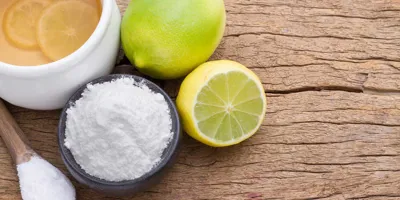
7 steps to create a DIY cardboard castle at home
Learn how to make a cardboard castle to fit their favourite interests. Find step-by-step cardboard castle DIY instructions and theme ideas here.
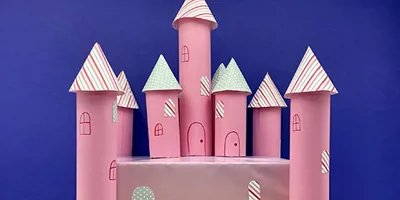
Reducing waste at home: The easy way
Find out how to save energy at home and reduce food waste with our top tips. Read on for handy pointers for making your household more eco-friendly.
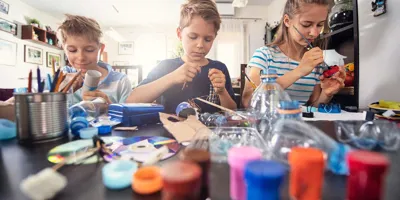
6 tips on how to save water at home
Learn how to save water at home. Find five easy ways to conserve water, so you can bring down your waste and make some clever savings in the process, here.

What does biodegradable mean and what is non-biodegradable?
Biodegradable and non-biodegradable? What do they mean?! Don’t fret, discover the definitions and biodegradable materials to become an eco-friendly pro!
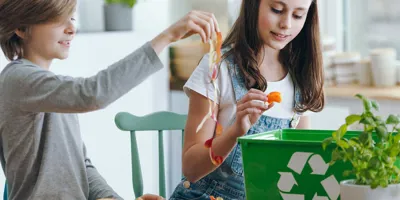
How to lead a sustainable lifestyle in 5 key ways
Learn how to live more sustainably with our tips on diet, methods of transport, energy consumption and product choices. Find sustainable living examples here.
